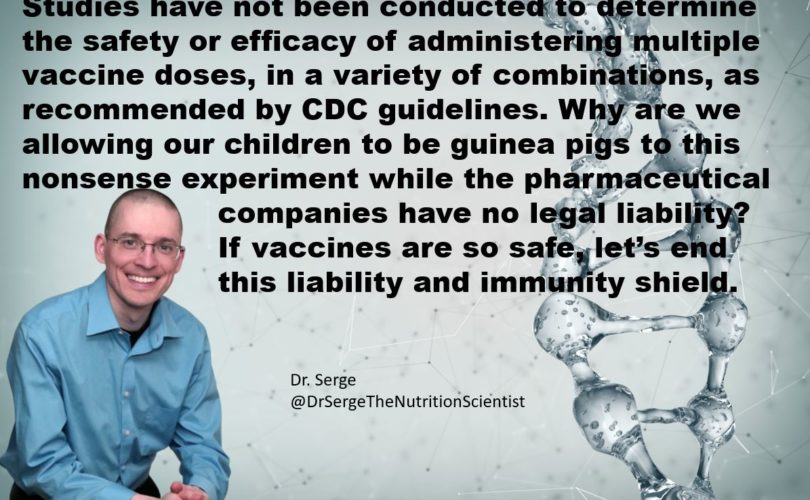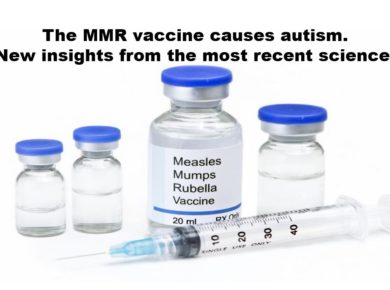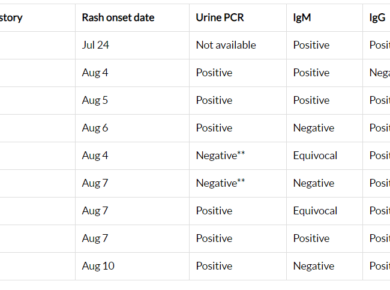We all know that no study has ever been done to investigate multiple vaccinations in children.
Until now! 😊
Take a look at this study:
The author looked if giving more than one vaccine affects the likelihood of having more side reactions like hospitalization and even death!
Here are some excerpts:
“In fact, shortly after VAERS was established, a large vaccine manufacturer, Connaught Laboratories, estimated “about a 50- fold under-reporting of adverse events in the passive reporting system.”3 Perhaps 98% of all adverse reactions to vaccines are not included in the VAERS database, and up to 25 million U.S. citizens could have been adversely affected by vaccines in the past 25 years.”
We all know that this system is not perfect. Especially it is well known to underreport vaccine reactions which is a big limiting factor like the author states:
“This well-known disadvantage of a passive reporting system, as opposed to an active surveillance system in which medical workers are trained to systematically collect all cases of suspected adverse vaccine reactions, is rarely acknowledged by health authorities when vaccine safety is discussed.”
Then, she continues:
“Although VAERS collects information about adverse events that occur after vaccines are administered, it should be noted that a report is not a confirmation that a vaccine caused the event. Health authorities like to emphasize this point whenever VAERS data are used in a study with findings that are critical of vaccines. The implication is that studies using VAERS are unreliable and should be disregarded. However, CDC considers VAERS an important vaccine safety assessment tool and regularly conducts its own studies using VAERS data, often to justify maintaining national vaccination campaigns.”
This is very true. The incidents reported in this system may or may not vaccine-related. But when a doctor reports an incident it is because he has confirmed that it may be the case. But on the other side, the number of cases reported raises of vaccine safety, which is a strength of this system.
“Finally, we isolated the “serious” adverse events— hospitalizations and death—from non-serious events, such as fever and local reactions. About 13% of all adverse events reported to VAERS are classified as serious, involving life-threatening conditions, hospitalization, permanent disability, or death.”
Of the 38,801 VAERS reports that we analyzed, 969 infants received two vaccine doses prior to the adverse event and 107 of those infants were hospitalized: a hospitalization rate of 11%.
Of 1,959 infants who received three vaccine doses prior to the adverse event, 243 of them required hospitalization: 12.4%. For four doses, 561 of 3,909 infants were hospitalized: 14.4%.
Notice the emerging pattern: Infants who had an adverse event reported to VAERS were more likely to require hospitalization when they received three vaccine doses instead of two, or four vaccine doses instead of three.
The pattern continues: Of 10,114 infants who received five vaccine doses prior to the adverse event, 1,463 of them required hospitalization: 14.5%. For six doses, 1,365 of 8,454 infants were hospitalized: 16.1%. For seven doses, 1,051 of 5,489 infants were hospitalized: 19.1%.
And for eight doses, 661 of 2,817 infants were hospitalized: 23.5%. The hospitalization rate increased linearly from 11.0% for two doses to 23.5% for eight doses. Linear regression analysis of hospitalization rates as a function of the number of reported vaccine doses yielded a linear relationship, with an R2 of 0.91.
Of the 38,801 VAERS reports that we analyzed, 11,927 infants received one, two, three, or four vaccine doses prior to having an adverse event, and 423 of those infants died: a mortality rate of 3.6%. The remaining 26,874 infants received five, six, seven, or eight vaccine doses prior to the adverse event and 1,458 of them died: 5.4%.
The mortality rate for infants who received five to eight vaccine doses (5.4%) is significantly higher than the mortality rate for infants who received one to four vaccine doses (3.6%)
In the 38,801 VAERS reports we analyzed, 26,408 infants were younger than six months. After receiving one or more vaccine doses, 1,623 of those infants died: a mortality rate of 6.1%.
In conclusion:
“Our study showed that infants who receive several vaccines concurrently, as recommended by CDC, are significantly more likely to be hospitalized or die when compared with infants who receive fewer vaccines simultaneously. It also showed that reported adverse effects were more likely to lead to hospitalization or death in younger infants.”
This is the first study that looks at the risks of having multiple vaccinations and it shows that the CDC vaccination schedule is very dangerous for children. As we just saw, more vaccines they receive, higher is the risk of hospitalization and even deaths.
Let’s fight to stop this experimental procedure for the sake of our children!
God bless y’all 😊
Dr. Serge







